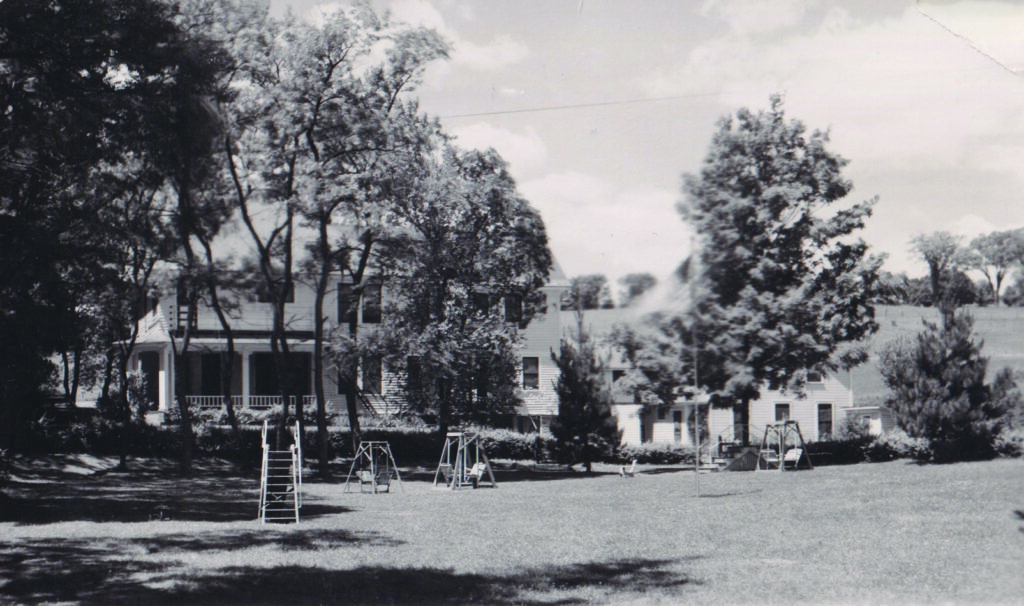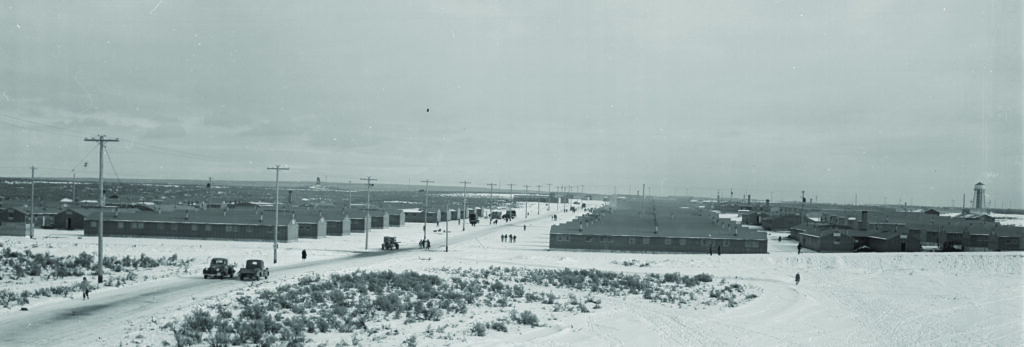
Pathfinder forerunner,
‘The Otsego School,’
helped three imprisoned
Japanese-Americans during WWII
By RICHARD McDONOUGH • Special to www.AllOTSEGO.com
An Edmeston school for children with Down syndrome welcomed three Japanese Americans in 1943, who had been imprisoned by the Federal Government for no other reason than their heritage.
The Otsego School provided employment opportunities for these three women.
The school in Edmeston has evolved through the years. Its successor is Pathfinder Village, which today provides a variety of educational and support services for people with Down syndrome.
The Oneonta Daily Star reported June 17, 1922, “The Chesebrough place at Edmeston has been remodeled and will soon be opened as the Otsego School for (children with Down syndrome).” The article indicated Susanne Jones and Florence Chesebrough were in charge of the school.
In early 1943, the Otsego School welcomed three new employees – Mary Hiroshige, Hisae Jeanne Mori and Rose Yasui.
According to Federal records, Mary Hiroshige was living in Seattle when she was taken into custody by the Federal government in 1942. Both of her parents were born in Japan and immigrated to the United States. She was born in Washington state in 1923, was an American citizen who had never been to Japan. She was a teacher and a member of the Baptist faith. She was able to speak both English and Japanese, as well as read and write English.
Rose Yasui was also a resident of Seattle when she was imprisoned by the U.S. in 1942, according to Federal records. While her parents were both born in Japan, she had never been to Japan. Yasui was born in Oregon in 1922. At the time of incarceration, Federal records indicated that she was working as a housekeeper and a stenographer/typist. The 1940 Census listed Rose Yasui as a “servant” of the Olsen family on 17th Avenue NE in Seattle. Yasui was also a Baptist.
The third woman was listed in one set of Federal records as “Jeanne H. Mori,” and as “Hisae J. Mori” in other Federal records. It was not unusual for one set of Federal records to include the Japanese first name – in this case, “Hisae” – and use the English first name as a middle name initial – in this case, “J” for “Jeanne,” while a second set of Federal records would include the English first name as the actual first name. Like the other two women, Mori was from Seattle. She was born an American citizen in Washington state in 1916. Her mother and father had been born in Japan. She spoke Japanese and English; she was able to read and write English. Mori was also a practicing Baptist. She was a teacher at the time of her imprisonment in 1942.
Each of these three women – each an American citizen – was considered a threat to the United States of America simply because of their Japanese American heritage. They were among the approximately 112,000 Japanese Americans incarcerated by the Federal government from 1942 to 1945. Two-thirds of these people imprisoned were American citizens.
The lives of the three women were intertwined for a couple of years. Each was held prisoner initially at the Puyallup Assembly Center (Puyallup Prison) in Washington, before being transferred to the Minidoka Relocation Center (Minidoka Prison) in Idaho.
While most Japanese Americans remained in custody during much of World War II, some of the individuals were released by the Federal government over a period of time for certain reasons. Some were released because colleges and universities agreed to enroll them as students. Some were released because they joined the military. Still others were released because institutions and businesses were willing to hire the individuals as workers.
This latter category is how Hiroshige, Mori and Yasui were able to get out of prison. Federal records indicated that the three women were able to go to the “Otsego School of Education.”
On April 17, 1943, The Minidoka Irrigator, the prison newspaper at the Minidoka Prison, reported, “Feted by 20 of her close friends, Miss Mary Hiroshige, 7-4-D, was guest of honor at a farewell party Tuesday evening in D. H. 7. She left for New York Wednesday (April 14, 1943).” Please note: “7-4-D” and “D. H. 7.” referred to barrack sections of the prison.
In the same edition of the newspaper, another news article reported Yasui was released to go to the Otsego School in Edmeston as one of those “… granted leaves on student relocation …”
According to an earlier edition of The Minidoka Irrigator on September 18, 1942, Mori was named head of children’s activities at the relocation center. This was one of the six divisions of activities at the prison.
While incarcerated at Minidoka, Mori was also a nursery school teacher, according to the University of Washington Libraries. In a newsletter Mori wrote to friends detailing her life in Idaho, she noted that sometime in November of 1942, the Otsego School offered her a job as a kindergarten teacher.
In that newsletter, dated January 10, 1943, Mori stated, “After serious consideration, I have finally decided to accept the position. Otsego School is a school for handicapped children, so it has its challenges and opportunities for me … When this war is over, we are going to have a lot of misadjusted children in our generation among our people, I know, if what is beginning to show in our camps (prison) is any indication of what the future holds for us. The need then will be great. I feel that the experience I will gain at this school is a challenge and will help me to prepare myself for further service. And, too, the need to make ourselves known to other Caucasians who do not know that Niseis (American citizens who were born in the U S to parents who had been born in Japan) are American at heart is great.”
Yasui described her experiences during the 1940s “… increasingly negative as time progressed,” according to “Our Best Thoughts Bloom Forth: Forming a Japanese American Community of Correspondents during World War II.” This was a research paper written by Aimee Ono in December 2008. The research paper highlighted correspondence between a number of Japanese Americans during the 1940s. In one letter to a friend citied in this document, a letter that Ono found in the records of the Washington State Historical Society in Tacoma, Yasui detailed that she disliked her time in New York.
After leaving her job at the Otsego School, Yasui, according to Ono, “… aspired to enter the Women’s Army Corps (WAC) in November (of 1943), but was rejected after failing the physical. Jobless, she was forced to move in with her sister.”
As with many Japanese-Americans, the stories about Yasui, Mori and Hiroshige were difficult to read and research, but fortunately history has recorded their journeys through Edmeston and Otsego County. The Otsego School provided a haven for them.



This is such an amazing story. I remember The Otsego School very well. When I would visit my grandparents, Jim and Mary Monroe of Edmeston, I would go to the Otsego School and I was allowed to interact with the residents. I really didn’t understand their disability but I found ways to “play” with them. Thanks for the story.